
Lean and gamey, venison needs an extra kick of flavor and a cooking technique that doesn't put a squeeze on its already minimal juiciness. Brining and smoking have it covered. An overnight brine fills the venison with some much-needed extra moisture, and smoking adds just enough cover to hide any traces of gaminess without sacrificing the taste of the meat. The deer venison shoulder corresponds with beef chuck, so you smoke it the same way, but you have to remove it from the heat as soon as it's safe to eat so it doesn't get unnecessarily tough.
Step 1
Create a basic meat brine with a ratio of two quarts water to 1/2 cup each kosher salt and granulated sugar. Make enough to submerge the venison shoulder. Bring to a boil in a pot or saucepan and stir.
Step 2
Stir the brine until the sugar and salt dissolve, then turn the heat off. Add any aromatic ingredients, whole spices or herbs to the brine and let them steep as it cools to room temperature.
Step 3
Pour the brine in a stainless-steel pot or food-storage container large enough to contain the deer shoulder and the brine. Chill the brine in the refrigerator until it reaches 40 degrees Fahrenheit or below.
Step 4
Remove the deer shoulder from the refrigerator and trim off as much fat and connective tissue as you can. If you have thin bands of silverskin attached, slice through them with a kitchen knife to score them, but don't cut into the meat.
Step 5
Place the deer shoulder in the brine and cover. Brine the shoulder in the refrigerator for 24 hours.
Step 6
Soak about one pound of hardwood chips in water for two hours before you start the grill.
Step 7
Remove the deer shoulder from the brine and rinse. The excess sugar will burn and the salt will concentrate during smoking.
Step 8
Pat the shoulder dry with paper towels. Coat the shoulder with salt and pepper or spice rub or spice paste of your choice.
Step 9
Set up your grill for smoking. If you have a charcoal grill, place one or two aluminum drip pans, depending on the size, half-filled with water on one side of the charcoal tray. Light a chimney starter full of lump charcoal and dump it on the side of the charcoal tray opposite the water trays after it ashes over. Cover the charcoal with a layer of wood chips. Close the grill lid and let it heat.
If you have a gas grill, place one or two aluminum drip pans half full of water on one side of the burners. Place a woodchip smoker box filled with woodchips on the burners on the side opposite the water trays. Set the heat to medium-high and close the lid.
Step 10
Place the deer shoulder on the side of the grill you placed the water pans on. Close the all the grill vents and the lid. Check the grill's thermostat after about 30 minutes. If the temperature is above 300 degrees Fahrenheit, open the vent on the bottom of the grill about halfway. If the temperature reads below 250 F, add more coals. Adjust the temperature as needed on gas grills so it stays between 250 and 300 F.
Step 11
Smoke the deer shoulder for about 1.5 hours per pound, or until it reaches an internal temperature of 140 F. The temperature will raise to the minimum required temperature for safe eating of 145 F during the rest period.
Step 12
Replenish the woodchips about every 20 to 30 minutes. Check the water every hour during smoking, adding enough water as needed so they don't dry out.
Step 13
Remove the deer shoulder from the grill and let it rest for 20 minutes per pound before cutting into it.
Related Articles
How to Cook Deer Rib

How to Smoke Pollock
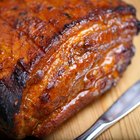
How to Barbecue or Grill a Pork Belly
How to Brine & Smoke Pork Belly
How to Smoke Baby Back Ribs

How to Cook Country Ham in an Electric ...
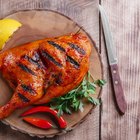
How to Cook Chicken Halves on a Weber ...
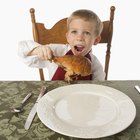
How to Cook Turkey Legs on the Grill
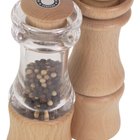
How to Smoke Carp
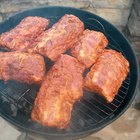
How to Smoke Ribs With a Gas Smoker
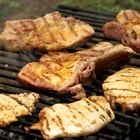
How to Smoke Pork on a Gas Grill

How to Gargle With Sea Salt
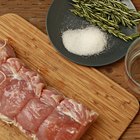
How to Brine Pork Roast
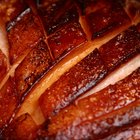
How Do I Roast a Picnic Ham?

How to Cook Pan Fried Deer Tenderloin

How to Defrost a Sirloin Rolled Roast ...
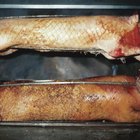
Cooking Times for Smoking Meat in an ...
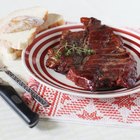
How to Smoke Elk Meat

How to Cook Ribs Over an Open Pit

How to Cook Wild Boar Ribs
References
Writer Bio
A.J. Andrews' work has appeared in Food and Wine, Fricote and "BBC Good Food." He lives in Europe where he bakes with wild yeast, milks goats for cheese and prepares for the Court of Master Sommeliers level II exam. Andrews received formal training at Le Cordon Bleu.
Photo Credits
Hemera Technologies/PhotoObjects.net/Getty Images